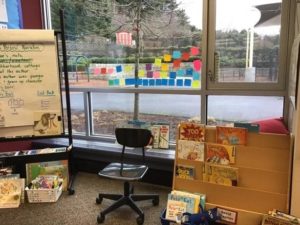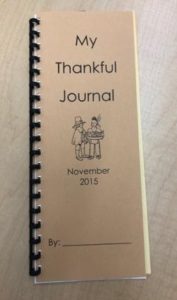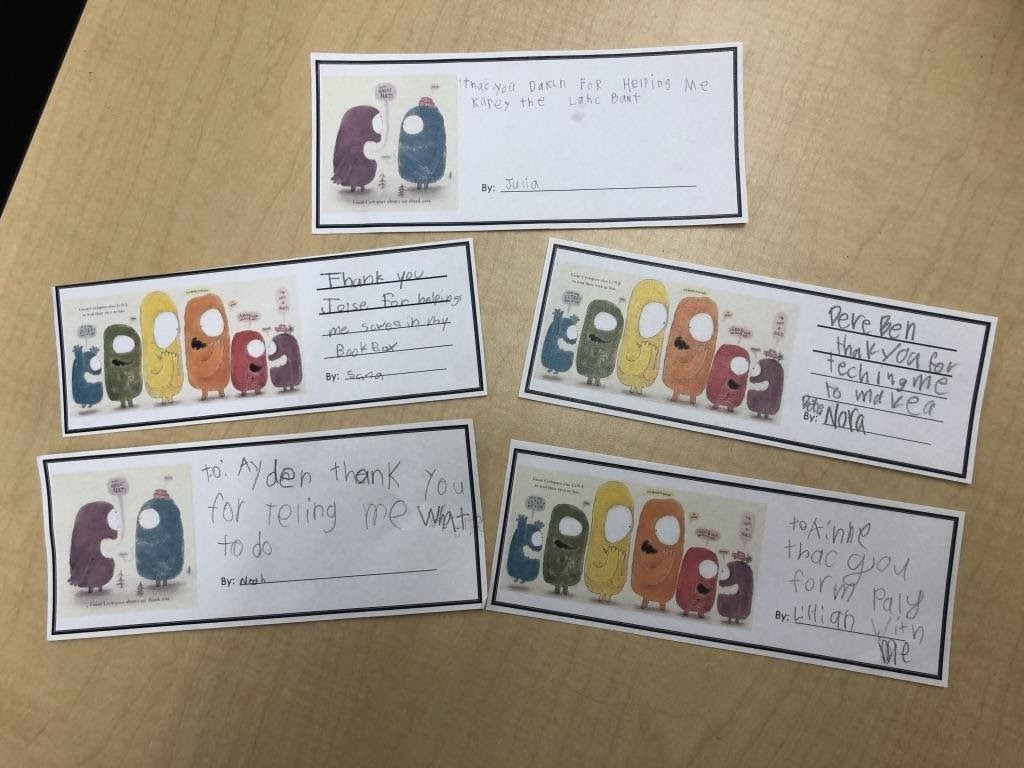https://choiceliteracy.com/article/routines-for-building-gratitude/
It was a particularly dreary Northwest winter morning. It had rained all night, and as I hustled to the car to leave for school, I noticed puddles of standing water in our garden beds and walkways, and circling the lawn. I drove to school, windshield wipers slapping, and ran into the building, shaking my materials of the dripping water. The day ahead looked to be pretty routine, and on a day like that day, routine felt dreary also.
As I was moving about my room getting set up and ready for students, I noted action outside my window. I paused and looked out to see a district work crew working on our outdoor space. They were trimming grass, raking beds, cutting back overgrown bushes and trees, and yanking overgrown weeds. As an avid and aspiring gardener, I was so happy. The beds had been bothering me to the point that I had thought about finding time to visit the school on the weekend to take care of some problem areas.
In that moment I felt grateful to live in a place where gardening in the winter is a norm, and grateful to teach at a school that is so well cared for. These few minutes took my mind off the dreariness and actually reset my outlook. I felt more ready to welcome my students as they came into the room—a little damp, but their usual cheerful selves.
A lot of research and a lot of articles are floating around about the importance of exercising gratitude and how it can actually rewire our brains for the better! These are a few simple routines that I’ve woven into our classroom to build gratitude in my students.
First-of-Day Community Circle
 After our morning greeting, our community circle often opens with “Does anyone have any reading or writing news to share?” This particular morning I shared about my morning and how seeing the playground area get cleaned up made me feel grateful for our school and our space. “I’m wondering if any of you have gratitude to share,” I said. Hands quickly went into the air, and our class was filled with grateful thoughts and grateful hearts.
After our morning greeting, our community circle often opens with “Does anyone have any reading or writing news to share?” This particular morning I shared about my morning and how seeing the playground area get cleaned up made me feel grateful for our school and our space. “I’m wondering if any of you have gratitude to share,” I said. Hands quickly went into the air, and our class was filled with grateful thoughts and grateful hearts.
And just like that, a new routine was born. Now each morning our circle still includes invitations for reading, writing, or math news, and it also includes gratitude that anyone would like to share. The students’ shares are typical of first graders—they’re thankful for their moms packing their lunches, their families, their warm houses, and so on—but occasionally we hear a gratitude that is a little deeper and we all feel the gratitude sink in. Adding gratitude to our morning circle gives a moment of pause and starts our day in a grateful mindset.
Thankful Journals
 In my class we end each day with singing a song and doing hand motions together. I change the song each month, and we add the lyrics to our songs-and-poems folder. In November, in the spirit of Thanksgiving, I switch it up a bit. Rather than sing and do hand motions, we write in our thankful journal while a song plays. The journal is a simple half page (although for older grades I’ve used a full page), and students write responses to “Today I learned . . .” and “I am thankful for . . .” There is also a space for a small picture.
In my class we end each day with singing a song and doing hand motions together. I change the song each month, and we add the lyrics to our songs-and-poems folder. In November, in the spirit of Thanksgiving, I switch it up a bit. Rather than sing and do hand motions, we write in our thankful journal while a song plays. The journal is a simple half page (although for older grades I’ve used a full page), and students write responses to “Today I learned . . .” and “I am thankful for . . .” There is also a space for a small picture.
At the end of November I compile each child’s papers into a personal thankful journal. Their spirit of gratitude is encapsulated for as long as they keep the journal, and ideally a habit of gratitude and reflection is created. This routine is easy to modify and continue throughout the year.

Student Recognition
When building our community in September one of my favorite read-alouds is Rude Cakes by Rowboat Watkins. In this story Rude Cakes doesn’t have any concern for manners. One night she is accidentally kidnapped by a giant cyclops who happens to have really good manners. Rude Cakes learns the lesson that manners are useful, and she changes her ways.
After I read this with my students, we talk about manners and kind behaviors that we want in the classroom to make our community feel safe, welcoming, and encouraging. Then I offer students a place to notice friends who are showing giant-cyclops behaviors. We post and celebrate these papers throughout September and beyond. I find that often these become more about gratitude for each other than just pointing out behaviors.

Last-Day Community Circle
As we gather in our last community circle of the year, I pull out I Wish You More by Amy Krouse Rosenthal and read it to my attentive and quiet audience. “I am so grateful that I got to spend the year with all of you, and there are many things that I wish for you,” I tell them as I close the book. “Not just for the summer but for the many years ahead of you. I’m grateful for the opportunity to get to know all of you and your families this year. I’m grateful for the thinking we did together around the books we read, and I wish for you fun and friends and adventures,” I say. “I wish that you will come back to visit as often as you can. I also wish you lots of good books!” Even at this young age, they almost sigh and roll their eyes at my predictable book comment. “It’s your turn to share a gratitude and a wish for yourself or your classmates . . . ”
These small routines are quick and easy to add to a classroom day, yet the benefits are huge. They add kindness and thoughtfulness to our community and maybe even help wire our brains for the better.


No comments:
Post a Comment